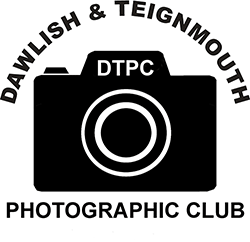Members of the Dawlish & Teignmouth Camera Club were given an insight into the fascinating world of photomicrography by guest speaker, David Spears.
David, from Taunton, began his scientific career in the 1960s and then moved into photography and cinematography, including making science-based television programmes for children and acting as consultant scientist on over 300 Science Pictures Productions for BBC, C4, Oxford University Press, Granada, and many other clients.
The definition of photomicrography is ‘a photograph of a microscopic object, taken with the aid of a microscope’. David explained that by combining a camera with a microscope you can achieve magnifications which allow you to see and photograph subjects you can't see with your naked eye. David’s specialist skills have seen him achieve Fellowships of the Microscopial Society and the Royal Photographic Society.
David has also developed and built a unique macro motion control system which means he can take multiple images at different levels of focus and combine these using software to produce a single image with great depth of field and incredible detail.
The microscope is a gateway to a new world of photographic images and it was fascinating to see some everyday objects in such detail – an ash twig which has the molecular structure of finely woven lace; patterned grains from the starchy fluid of a peeled potato; and a tadpole resembling a little alien beast. However, the highly magnified images of dust mites and head lice were not for the faint-hearted!
Another method used is Schlieren photography, which is an interesting optical technique that allows you to see how air moves and this was demonstrated showing the steam from a boiling kettle.
David uses a Zeiss microscope and a Sony camera for some of his work and also explained about the enormous and highly specialised Scanning Electron Microscope, which uses a different process altogether. Specimens need to be soaked in acetone and then dried out before being covered in a fine dusting of palladium or gold so that electrons interact with the scanner, bouncing over the topography of the specimen and creating the final image.
All images © David Spears
Left to right:
Image of Kettle steam using Schlieren photography
Image of Ash twig using Scanning Electron Microscope
Image of Tadpole using a Scanning Electron Microscope
Image of Potato starch grains using Zeiss light microscope
The images gave club members a rare view into miniature universes that exist within everyday objects and Club Chair, Naomi Stolow, thanked David for a really interesting presentation.
If you have an interest in photography and would like to join the Club, please see the website www.dawlishteignmouthcameraclub.co.uk or contact the club for more details.
